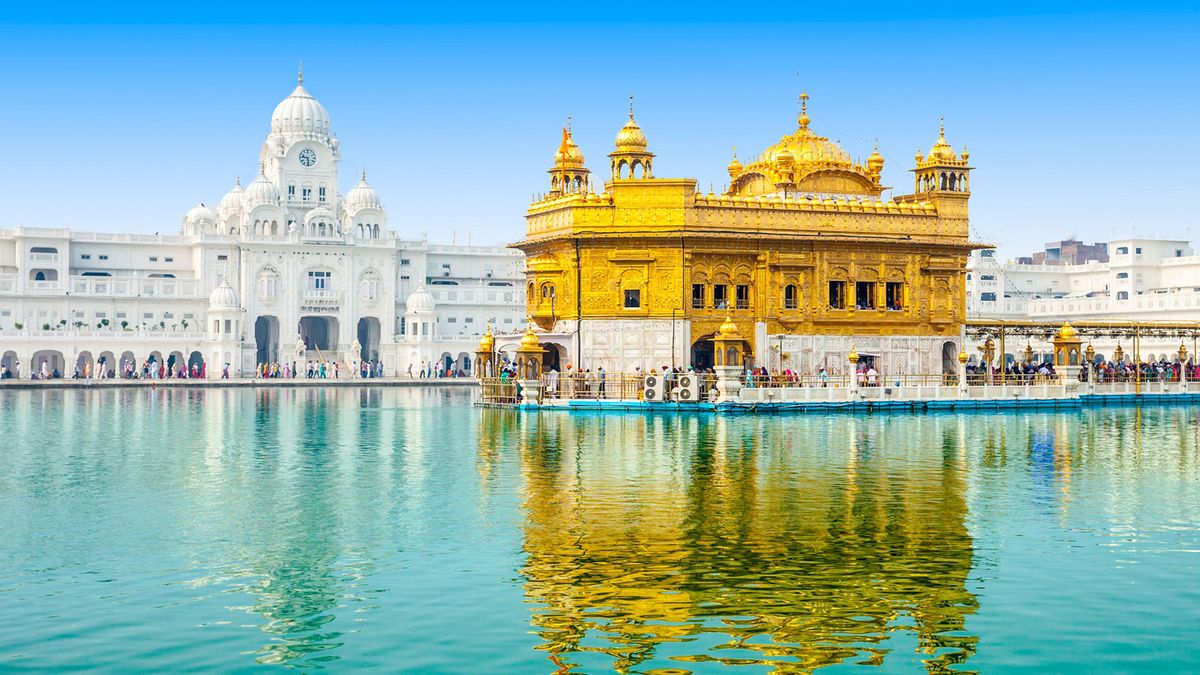Take a peek into the world’s largest community kitchen — the Golden Temple langar — and you’ll soon find out that it is one of the most satisfying meals you will eat in your lifetime. The meal is free of cost and served in the community hall of the gurdwara.
The Golden Temple of Amritsar witnesses an average footfall of one lakh devotees every day. Most of these devotees also enjoy langar food after offering prayers. The practice of langar was started in 1481 by Guru Nanak Dev Ji. Guru Ramdas Ji started the Golden Temple langar in 1577. From then till date, the Golden Temple kitchen feeds more than 75,000 people daily.
The Amritsar Golden Temple langar is an experience that will engulf you in a humbling feeling of spiritual divinity.
What to expect at the Golden Temple langar?
At the Golden Temple langar hall, every devotee is equal irrespective of gender, religion, caste or creed. The Guru Ramdas langar hall is a sprawling 50,000 square feet area that accommodates 5,000 people at a time. Everyone is welcome at the Amritsar langar, no questions asked, and free of cost. You will be served the langar food with love and warmth by devotees who do ‘sewa’ or volunteer at the temple.
Behind the scenes of the Golden Temple langar
Running one of the largest kitchens in the world, meals at the Golden Temple were originally handmade. Now the Gurudwara has an automatic roti-making machine that makes 25,000 roti in an hour. On any given day, more than 50,000 people eat langar food. The Golden Temple kitchen operates in two spaces because the sheer scale of operations cannot be confined to a single area. For regular langar, the temple uses 1,500 kg of rice, 12,000 kg of whole wheat flour, 13,000 kg of lentils and 2,000 kg of vegetables.
On the menu of Golden Temple langar
The langar food menu includes staples like rice, dal, roti, sabzi and a sweet like kheer. It makes a complete balanced vegetarian meal with proteins, carbohydrates and nutritious greens. The meal is prepared by selfless volunteers known as ‘sewaks’ along with the working staff who tirelessly put their heart and soul into preparing, serving and cooking huge quantities of food daily. Eating langar at the Golden Temple is a larger than life experience that will satiate your soul more than your stomach.
There is no langar timing at Golden Temple. The kitchen runs 24 hours a day, feeding hungry devotees a delicious and fulfilling meal.
Volunteer-driven langar at the Golden Temple
Langar food is run by volunteers and workers who treat anyone and everyone equally. Doing sewa at the Golden temple is a wholesome experience that will fill your soul with calming gratitude toward the life you have. Along with the experience of visiting the temple and eating langar, Kada prasad at the Golden Temple tastes divine. Made using whole wheat flour (atta), sugar, desi ghee and water, the prasad has a beautiful aroma and is believed to be a powerful cure for ailments.
Eating langar from the Golden Temple kitchen will remind you that warmth, compassion and love still prevail in the world. Selfless volunteers are seen sweeping the temple floors, cutting and chopping vegetables, serving delicious hot langar food and washing dishes after. This sewa towards the community in itself is a gratifying experience that one must try to feel its true power. Golden Temple tourism is one of the biggest profit generators for the state of Punjab.
Disclaimer: The details mentioned throughout this blog are sourced from publicly accessible platforms. At Zeezest, we intend to share factual and verified information. Should there be any inconsistencies or variances in the information provided, please understand that these are entirely unintentional and not meant to mislead.


